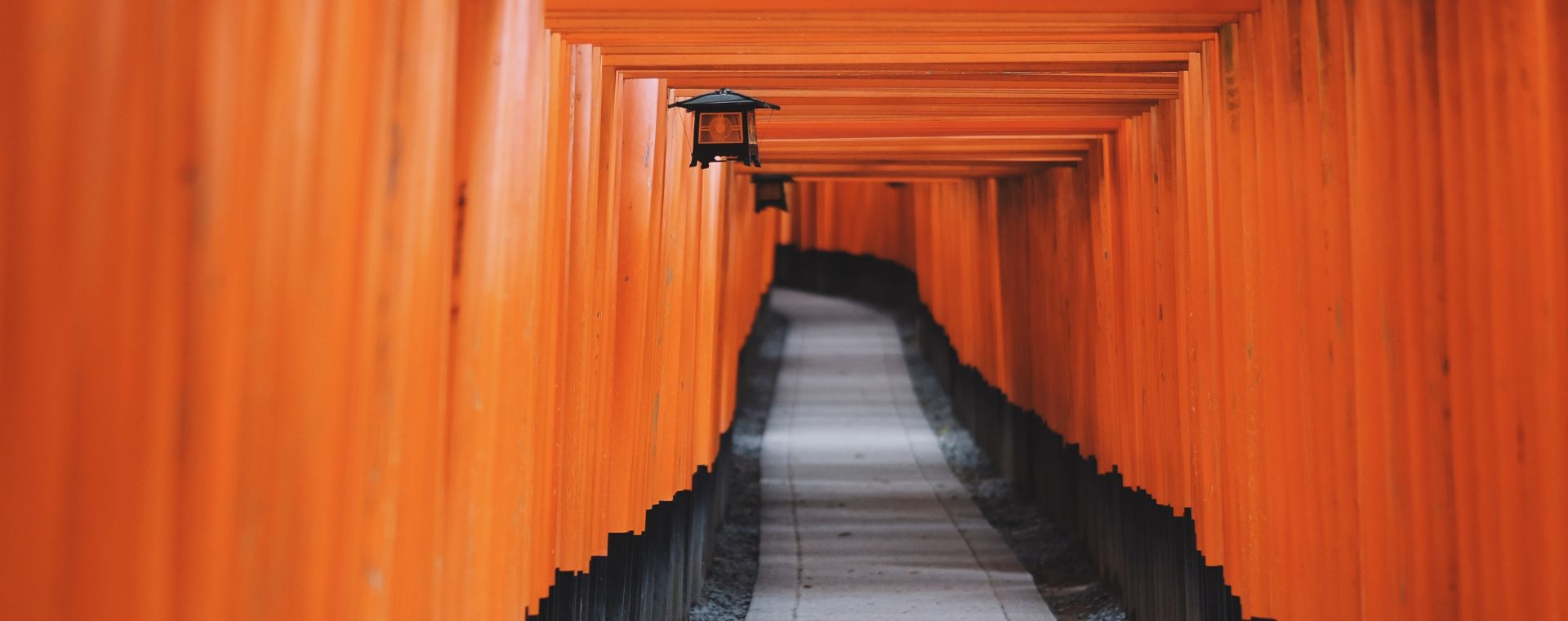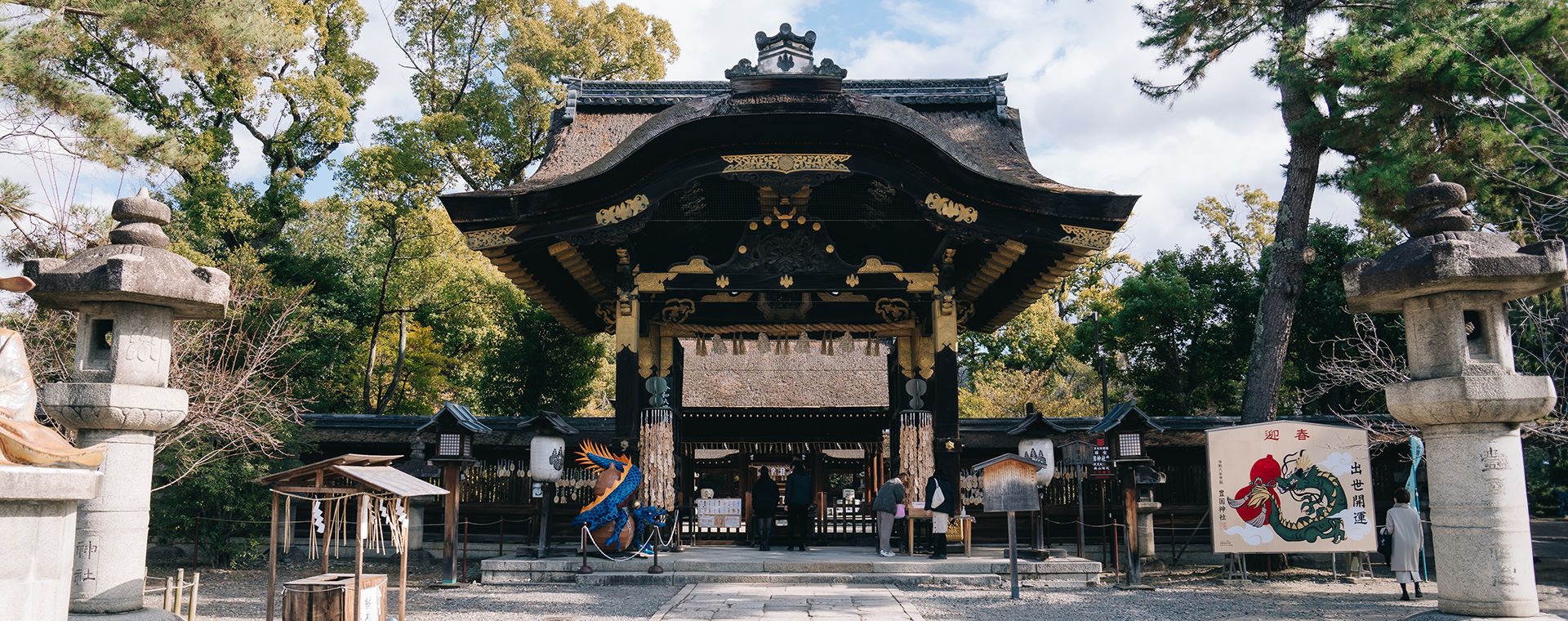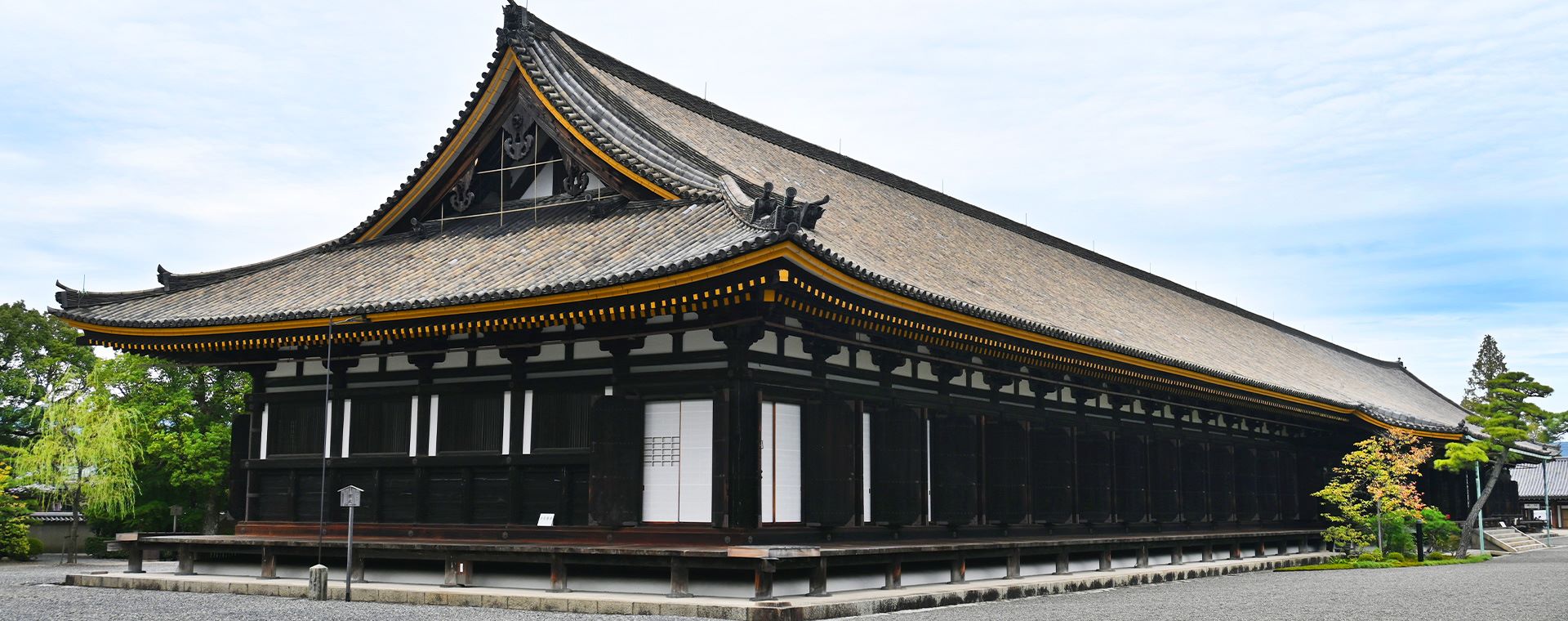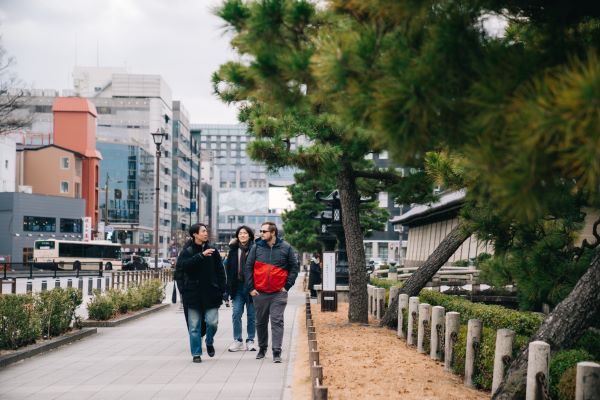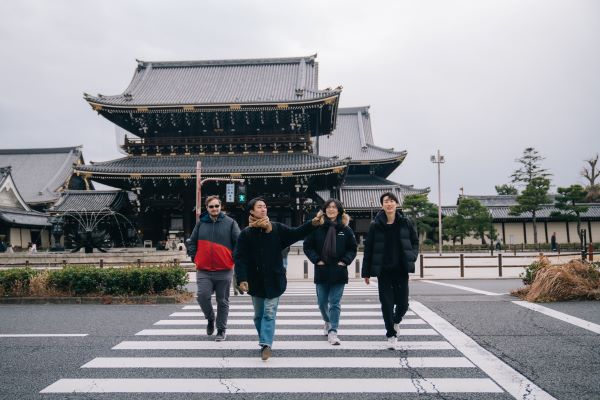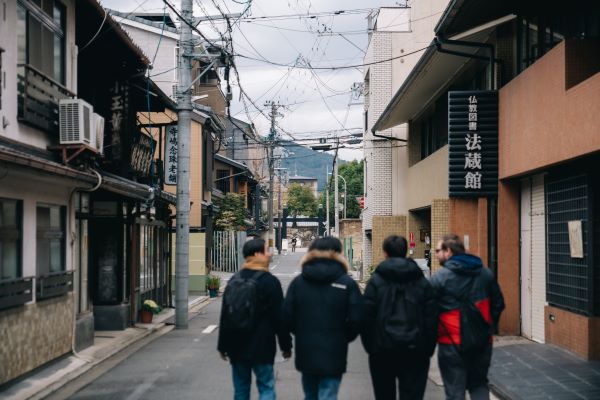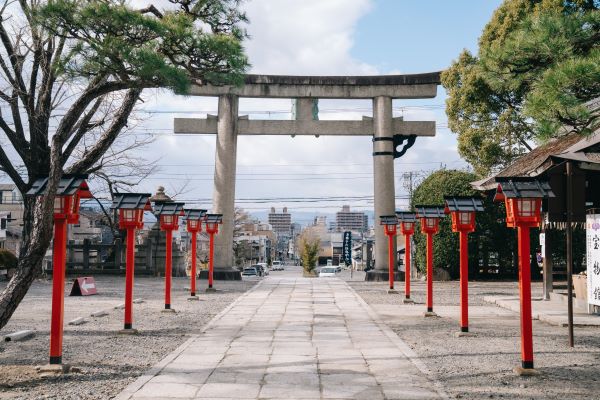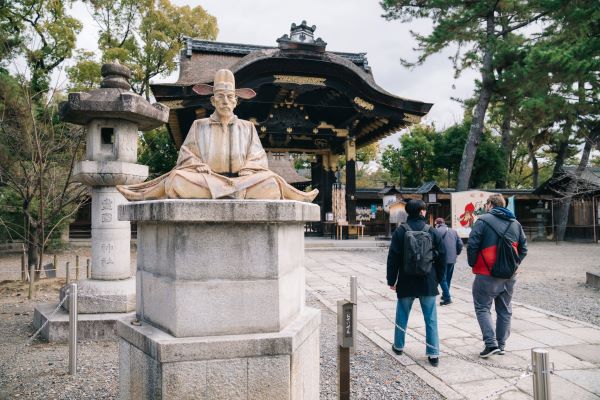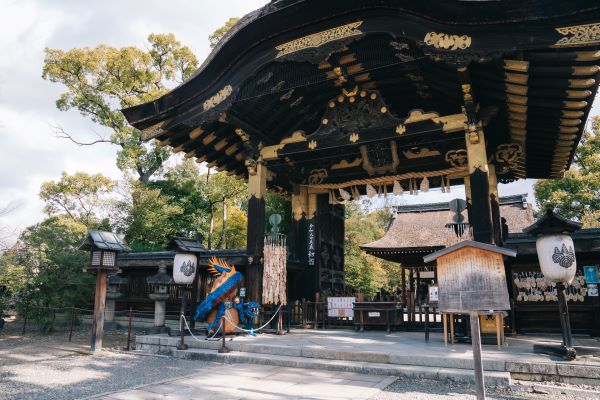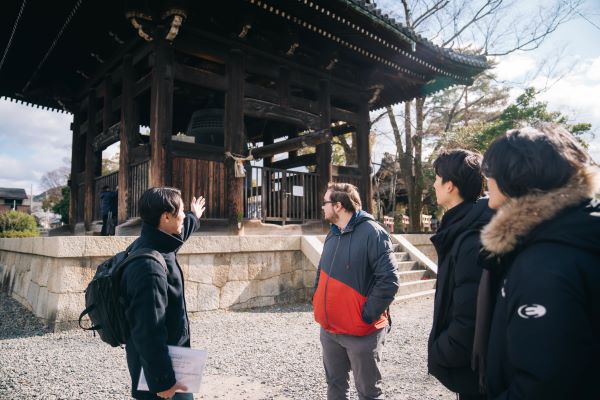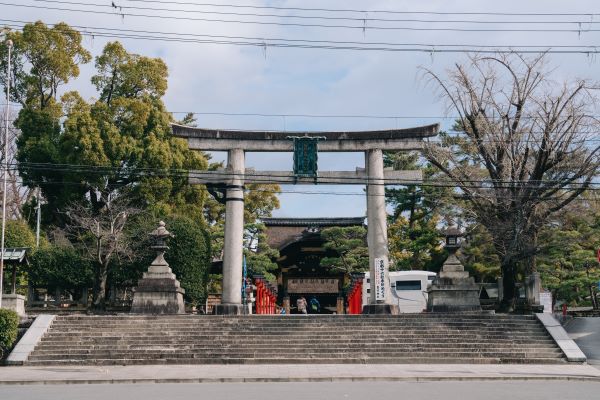Explore Kyoto with a guide
Concept

Kyoto is a city filled with charm that has been accumulated over a long history.
There are scenes from history that you might have seen in textbooks.
On local tours, we will walk around the city from the neighborhood to the classic spots and talk about various history and trivia.
By connecting the dots that have always been inside you with the many dots hidden in the streets of Kyoto, the scenery you have been seeing will change. May you make more new discoveries and expand the joy of your travels.
Guide
Kenta Sugiyama
杉山 健太
Profile
Born in 1994. He grew up in Kumano City, Mie Prefecture, surrounded by nature and history, and moved to Kyoto after university.
During that time, she also studied abroad, and then became a concierge at Hotel Kanra Kyoto.
In addition to my concierge duties, I am also responsible for managing the hotel's shop, planning events, and guiding local tours. Currently, he is working hard every day to focus on tour guides and crafts. Lately, I've been into indigo, camping, and visiting stone monuments.

Tour
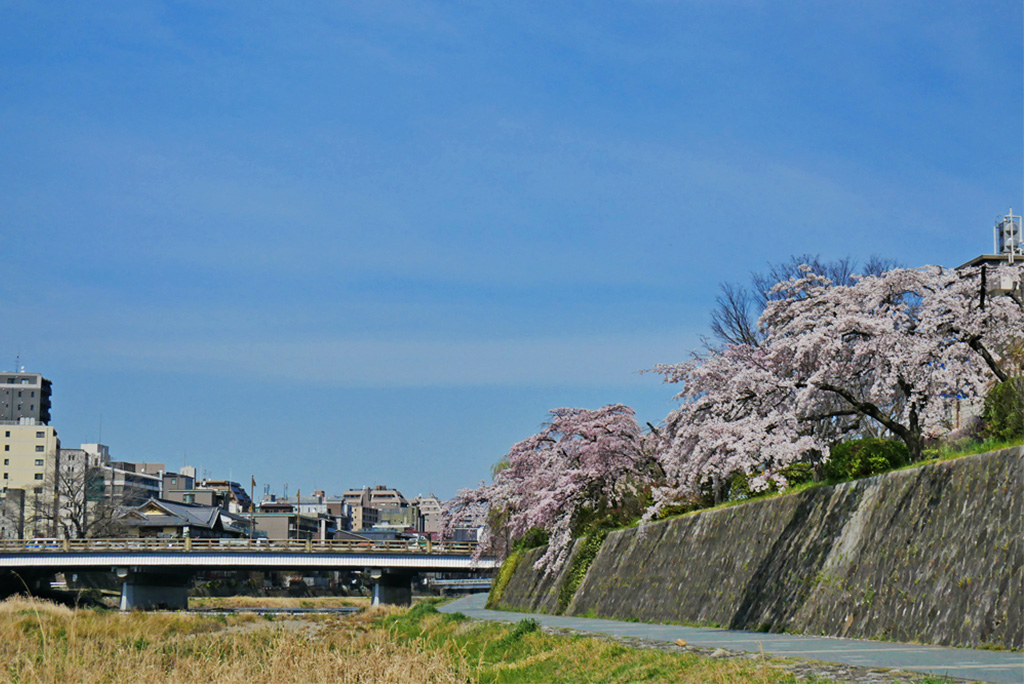
Course
- 【Higashi Honganji area】
Why was Honganji divided into East and West Honganji, and what is the background behind its magnificent architecture? ! There is also Shoseien, a villa garden at Higashi Honganji Temple, which is related to The Tale of Genji.
There are two Honganji temples located in front of Kyoto Station, located on the east and west sides of the main temple of the Jodo Shinshu sect. We will introduce you to the differences between these two temples, the reason why these two temples were built in their current locations, and the characteristics of the sect hidden in their magnificent architecture, including the world's largest wooden structure, Mieido. Afterwards, head to Higashi Honganji Temple's villa garden, Shoseien. This is a place that is also connected to "The Tale of Genji," which is currently a hot topic in the Taiga drama. Traces of Toyotomi Hideyoshi's urban development? What did Hikaru Genji's model enjoy? We will take a leisurely tour of the garden, learning how to enjoy the garden and comparing it with old illustrations.
Participation fee : ¥4,000 (excluding admission fee)/person
Time required:About 2 hours - 【Sanjusangendo area】
A symbol of power and prosperity at the end of the Heian period. What is the hidden meaning behind the numbers? Next, we headed to Toyokuni Shrine, where Japan's largest Buddha statue was once located. There are traces of power and conflict here too. What do they leave behind now?
This area was a landmark from the Heian period to the Edo period. There are 1001 Senju Kannon statues in the World Heritage Site Sanjusangendo. Why are there so many Buddha statues? We will guide you while unraveling the background that is so overwhelming that you tend to overlook it. After that, I went to the nearby Toyokuni Shrine. This is the place where Japan's largest Buddha statue once stood. We will tour the traces of the Great Buddha, which no longer exists. We will then talk about the conflict between Toyotomi and Tokugawa that can be seen on the map, and the bell that led to Toyotomi's downfall.
Participation fee : ¥4,000 (excluding admission fee)/person
Time required:About 2.5 hours - 【Kamogawa course / Spring】
Shichijo Kawaramachi - Takase River - Sanjo Ohashi Bridge. Kamogawa, an oasis for everyday life. As you walk along the beautiful riverside of cherry blossoms, you can learn about the story of the Kamogawa River, which has been close to people for over 1,000 years.
Kamogawa is a place that I always want to visit. A variety of people spend their time in their own way and are always kind and supportive. The modern oasis has changed its role over its long history. A river that was once more majestic at the eastern end of Heiankyo. Water is one of the most important elements of life, as ancient civilizations were always located along rivers and water. The Kamogawa River has many different faces, including a border, a water source for daily life, and a water source for purifying dirt. Starting from Shichijo-dori Street, you will walk north from Gojo along the Kamo River, visiting the ruins of an aristocratic mansion that was the model for The Tale of Genji, and small shrines that remain from the Heian period.
Participation fee : ¥3,500 /person
Time required:About 1.5 hours
Notes
- Please make your reservation at least 3 days prior to your preferred date.
- You can join the tour as long as it is available, but the reservation by the day before at 19:00 will be really appreciated.
- Please note that we may not be able to meet your request. We will let you know when we get back to you after you submit this form.
- This tour is basically a walking tour. Please wear comfortable walking shoes and clothes on the day of the tour.
- No cancellations for rain, only cancellations for storms.
Schedule
GALLERY
ギャラリー

